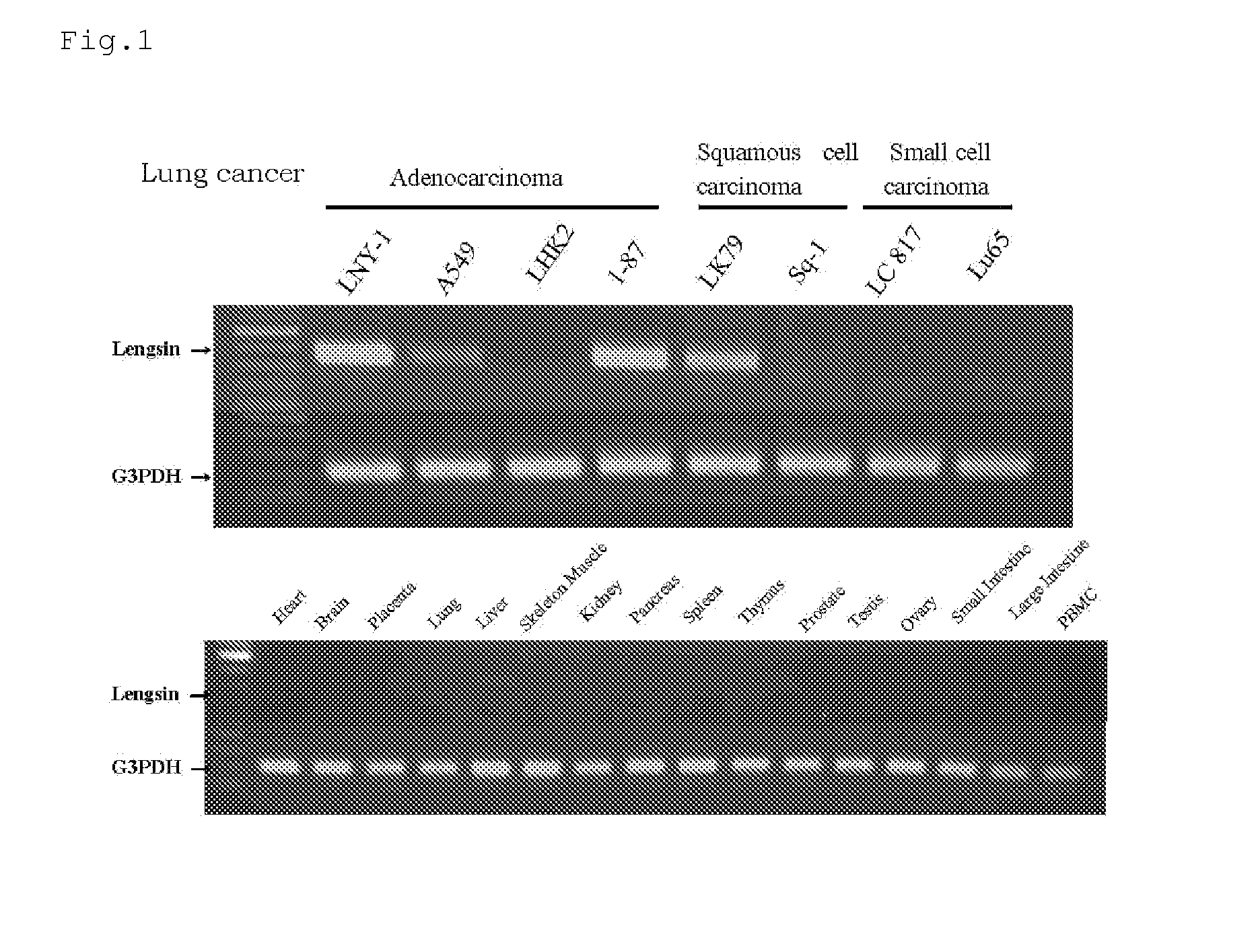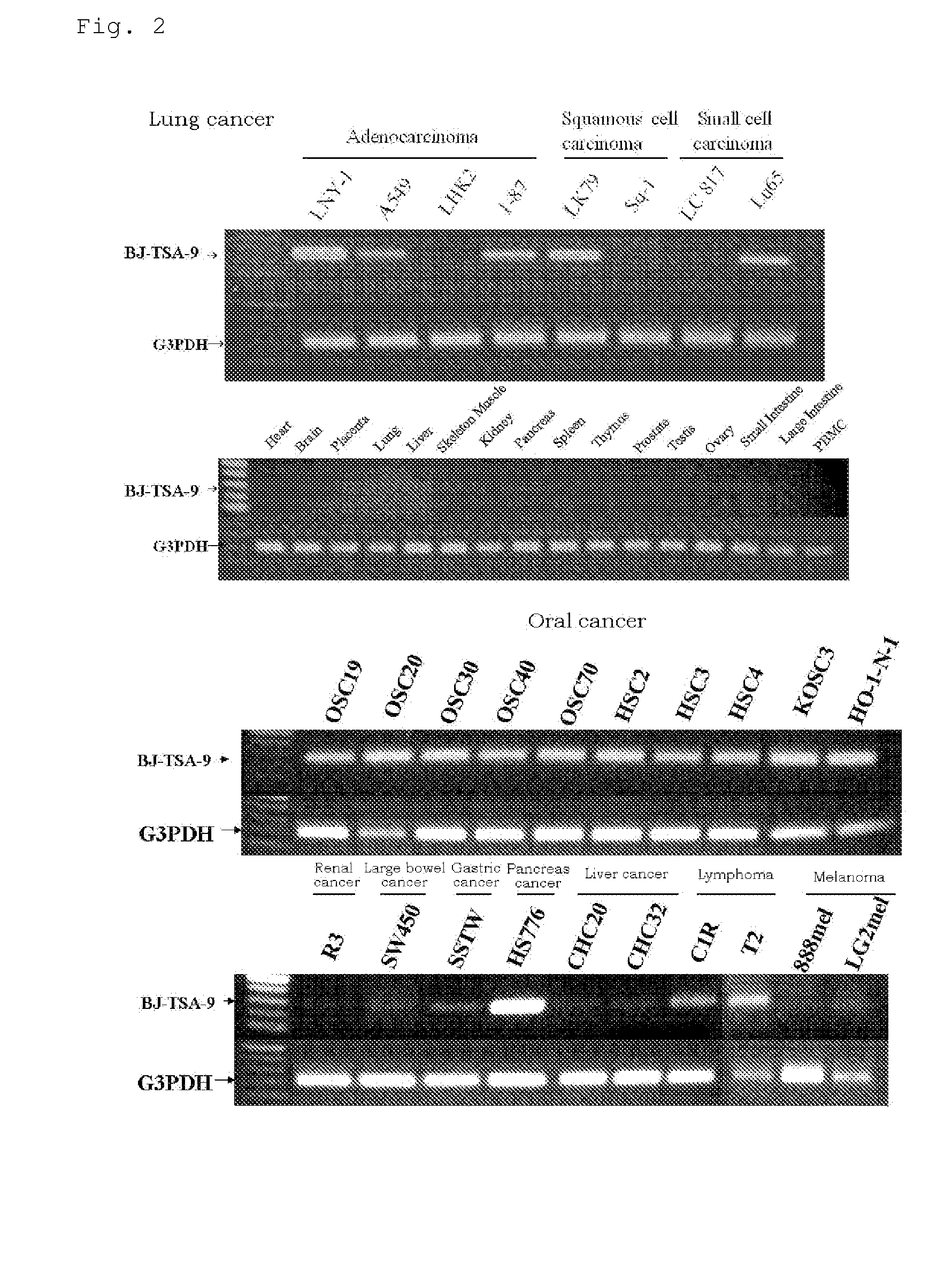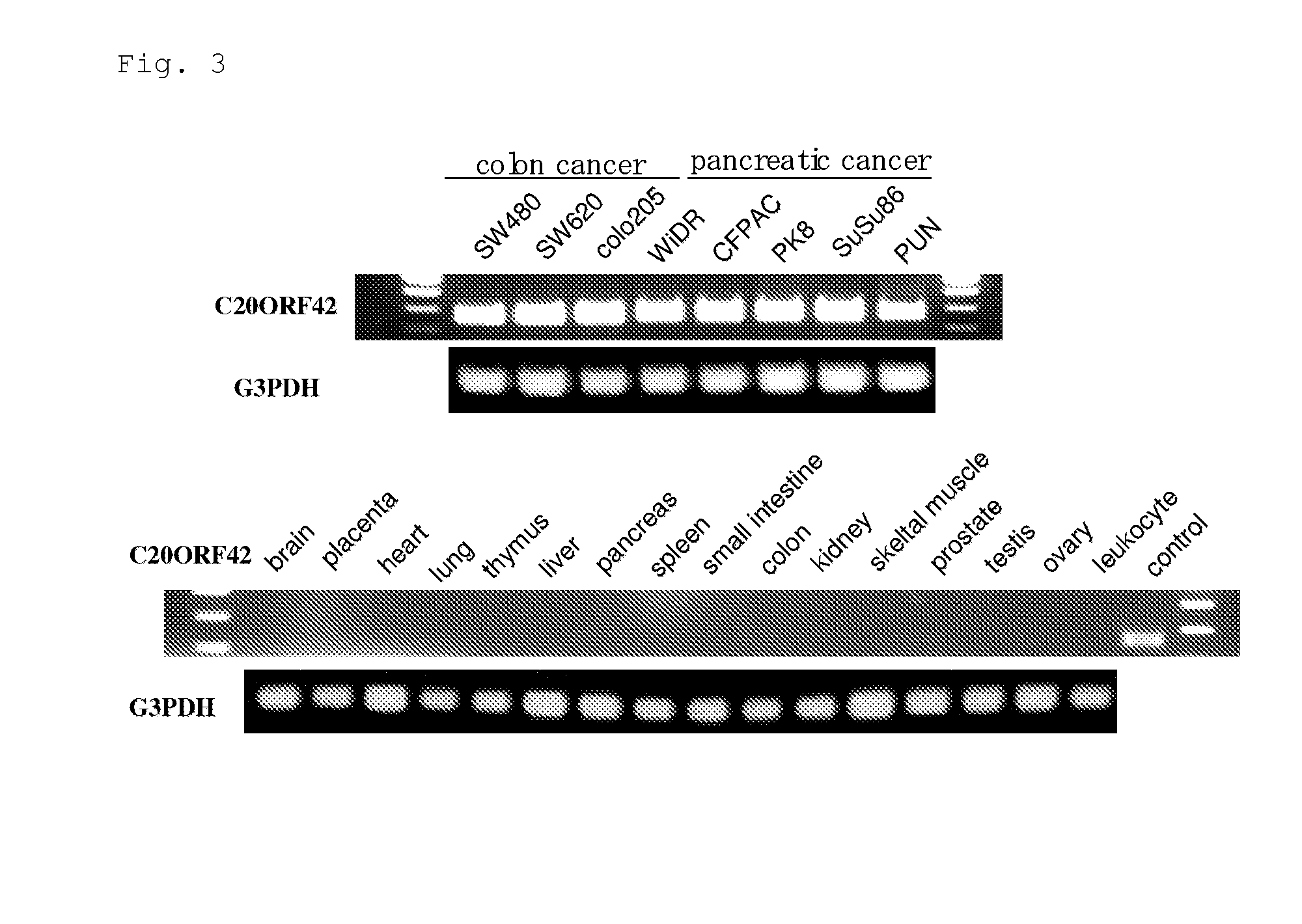Novel tumor antigen peptides
a tumor and antigen technology, applied in the field of tumor immunity, can solve problems such as abnormal segregation of chromosomes
- Summary
- Abstract
- Description
- Claims
- Application Information
AI Technical Summary
Benefits of technology
Problems solved by technology
Method used
Image
Examples
example 1
Preparation of Total RNA from Human Tissue Samples and Human Cancer cell lines
[0332]Total RNA was prepared by a conventional method from samples of cancer and normal tissues of human major organs as follows: lung adenocarcinoma (57 samples), normal lung (derived from lung adenocarcinoma patients) (46 samples), lung squamous cell carcinoma (48 samples), normal lung (derived from lung squamous cell carcinoma patients) (18 samples), colon cancer (108 samples), normal colon (derived from colon cancer patients) (114 samples), rectal cancer (43 samples), normal rectum (derived from rectal cancer patients) (31 samples), gastric cancer (38 samples), normal stomach (derived from gastric cancer patients) (13 samples), breast cancer (237 samples), normal breast (derived from breast cancer patients) (39 samples), ovarian cancer (37 samples), normal ovarian (derived from ovarian cancer patients) (5 samples), liver cancer (19 samples), normal liver (derived from liver cancer patients) (8 samples)...
example 2
[0333]Using the total RNA prepared from the samples as described in Example 1, DNA chip analysis was performed. For the DNA chip analysis, Gene Chip Human Genome U133 set (Affymetrix) was used. Specifically, the analysis comprised the following steps: (1) preparation of cDNA from the total RNA, (2) preparation of labeled cRNA from the cDNA, (3) fragmentation of the labeled cRNA, (4) hybridization of the fragmented cRNA with a probe array, (5) staining of the probe array, (6) scanning of the probe array, and (7) analysis of gene expression.
(1) Preparation of cDNA from Total RNA
[0334]A mixture containing each total RNA (10 μg) prepared in Example 1 and T7-(dT)24 primer (Amersham) (100 pmol) (11 μl) was heated at 70° C. for 10 min and cooled on ice. After the cooling, 5× First Strand cDNA Buffer (4 μL), 0.1 M DTT (dithiothreitol) (2 μl), and 10 mM dNTP Mix (11) (SuperScript Choice System for cDNA Synthesis (Gibco-BRL)) were added and the mixture was heated at 42° C. fo...
example 3
Analysis of Variation in Expression
[0341]As described below, genes showing increase of expression level and / or frequency in cancer tissues compared to normal tissues originated from various major organs (lung, colon, rectum, stomach, breast, liver, kidney, ovary, pancreas) were selected.
[0342]According to the result of the DNA chip analysis for gene expression, from a set of probes whose expression level and / or frequency were increased in cancer tissues compared to the corresponding normal tissues, probes showing specific increase of expression level and / or frequency in many cancer tissues were selected. Then, genes corresponding to those selected probes were checked and selected.
[0343]As a result, six genes, BUB1, C10orf3, C20orf42, Lengsin, HIFPH3 and BJ-TSA-9 genes, were selected. Ratios of variation in expression of those six genes are described in Table 2 and expression frequencies are in Table 3.
TABLE 2LungLungsquamousBreastColonRenalLiveradeno-cellPancreasGastricOvarianRectal...
PUM
 Login to View More
Login to View More Abstract
Description
Claims
Application Information
 Login to View More
Login to View More - R&D
- Intellectual Property
- Life Sciences
- Materials
- Tech Scout
- Unparalleled Data Quality
- Higher Quality Content
- 60% Fewer Hallucinations
Browse by: Latest US Patents, China's latest patents, Technical Efficacy Thesaurus, Application Domain, Technology Topic, Popular Technical Reports.
© 2025 PatSnap. All rights reserved.Legal|Privacy policy|Modern Slavery Act Transparency Statement|Sitemap|About US| Contact US: help@patsnap.com



